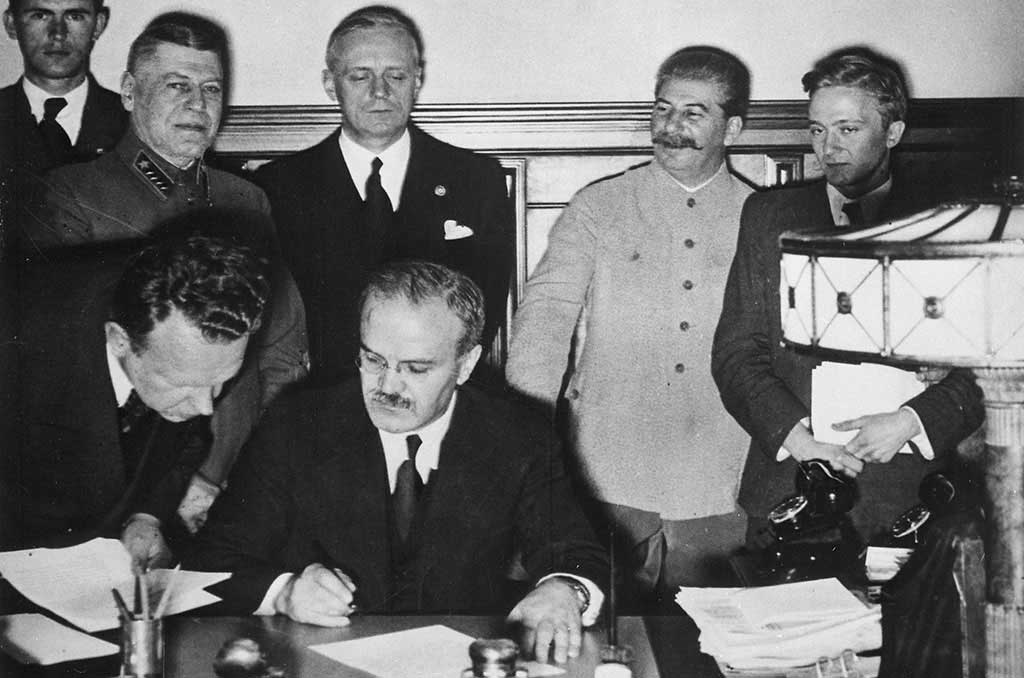23 Aug 1939
Molotov-Ribbentrop Pact was the final preparation for World War II. Germany and Soviet Union ratified their European spheres of interest and agreed on mutual non-aggression for ten years.

Vyacheslav Molotov Signing the German-Soviet Frontier Treaty, 28 September 1939. Unknown Photographer
Background
Nazi-Soviet Pact was equally advantageous for both sides. Germany needed Soviet guarantee, it will not intervene from the East, once Germany invades Western Poland and challenges Western European countries. Stalin needed time to improve Russia’s military potential.
Molotov-Ribbentrop Pact
The agreement had two parts and one secret protocol. On 19 August 1939, an Economic agreement was signed. Germany guaranteed to export goods to Russia in return to Russia’s raw materials.
On 23 August 1939, the Nazi-Soviet Non-Aggression Pact was signed for 10 years. Its Secret Protocol divided Europe into spheres of interest. Eastern Poland, Finland, the Baltic states, Northern Bukovina and Bessarabia remained in the Soviet sphere of influence. Western Poland, Hungary, Romania and Slovakia remained in the German sphere of interest.
Results
The pact served well at the beginning of the war but already in December 1939 Hitler signed the secret plan called Barbarossa to invade the Soviet Union. The offensive was launched 22 June 1941.
Molotov-Ribbentrop Pact
23 Aug 1939
Molotov-Ribbentrop Pact was the final preparation for World War II. Germany and Soviet Union ratified their European spheres of interest and agreed on mutual non-aggression for ten years.
Vyacheslav Molotov Signing the German-Soviet Frontier Treaty, 28 September 1939. Unknown Photographer
Background
Nazi-Soviet Pact was equally advantageous for both sides. Germany needed Soviet guarantee, it will not intervene from the East, once Germany invades Western Poland and challenges Western European countries. Stalin needed time to improve Russia’s military potential.
Molotov-Ribbentrop Pact
The agreement had two parts and one secret protocol. On 19 August 1939, an Economic agreement was signed. Germany guaranteed to export goods to Russia in return to Russia’s raw materials.
On 23 August 1939, the Nazi-Soviet Non-Aggression Pact was signed for 10 years. Its Secret Protocol divided Europe into spheres of interest. Eastern Poland, Finland, the Baltic states, Northern Bukovina and Bessarabia remained in the Soviet sphere of influence. Western Poland, Hungary, Romania and Slovakia remained in the German sphere of interest.
Results
The pact served well at the beginning of the war but already in December 1939 Hitler signed the secret plan called Barbarossa to invade the Soviet Union. The offensive was launched 22 June 1941.
Georgy Zhukov